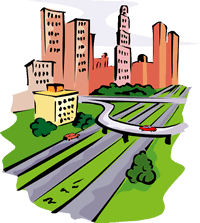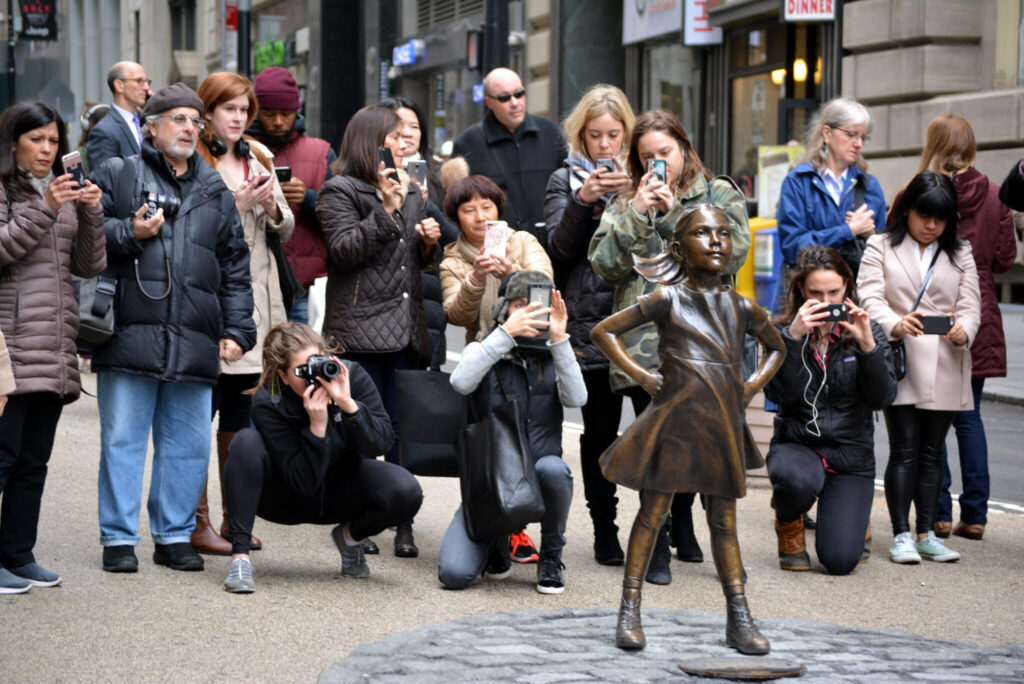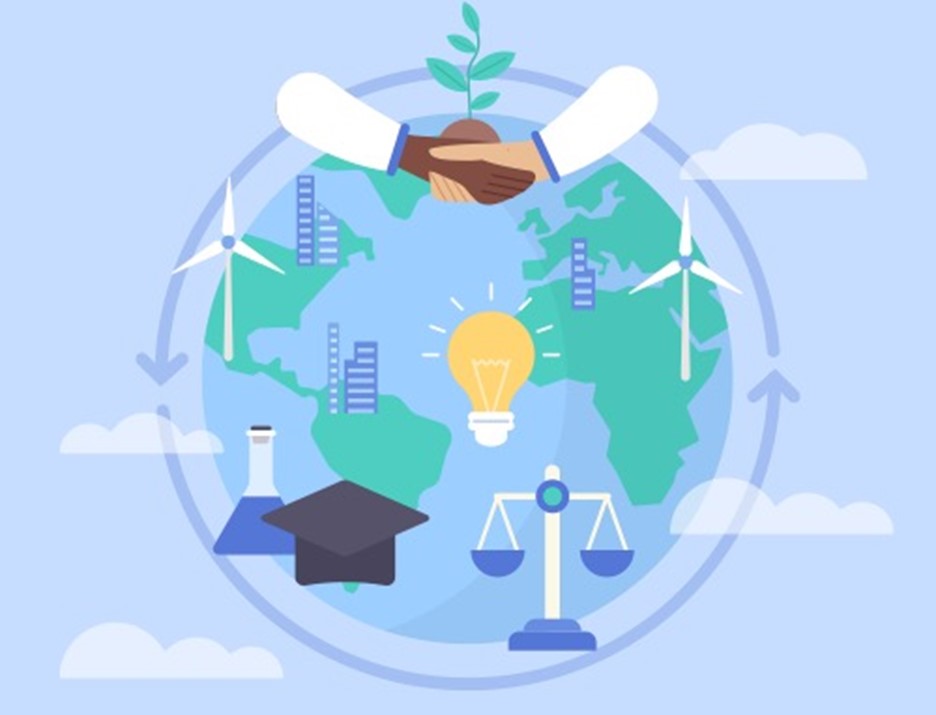
Grades 9-12
Happy EconEdMonth! Celebrate economics all month long by visiting EconEdMonth.org

Don't have an account yet? Sign up for free
Don't have an account yet? Sign up for free


Advancements in transportation have played a key role in the growth of our nation. U.S. government policies have also had a considerable impact on the development of transport as we know it today. In this series of three lessons, the students examine transportation and its impact on our nation (and vice versa) since the United States declared its independence in 1776. Lesson 1 focuses on improvements in transportation during the 19th century, particularly the development of a national rail system, to show how invention, innovation and infrastructure encouraged western expansion and economic growth. Lesson 2 moves on to the 20th century focusing on the development of auto transport and aviation. The impact on communities and world trade, for both good and bad,is examined. Lesson 3 calls upon the students to create a class timeline of transportation milestones; the timeline will help the students more clearly understand the factors, especially the economic incentives, that have played a key role in what has been called the “Transportation Revolution.” While these three lessons will ideally be used together as a set, teachers may choose to use one or two of them, selectively, to focus, for example, on the 19th or the 20th century. If you would like your students to study the economics of transportation in more depth, consider following up with the EconEdLink lesson,An Economic Mystery: What Happened to Railroads?
| Part 1 | Part 2 | Part 3 |
Note to Teachers: Before you begin this lesson, you will need to do some preliminary work on the class timeline as described at the end of this section.
On the board, write the statement, “A picture is worth a thousand words.” Ask the students what they think this statement means. [A visual image can convey as much meaning as a thousand words]
Show the students the poster of “Transportation Milestones” and tell them that it is a chart of some of the earliest known advancements that have contributed to transport  as we know it today. All of these events occurred long before the events explored in lessons 1 and 2.
as we know it today. All of these events occurred long before the events explored in lessons 1 and 2.
Discuss:
How might we represent this chart visually so it is easier to understand?
[A timeline with images reflecting the milestones.]
What would be the advantage of a timeline?
[A timeline provides a graphic perspective on the amount of time that occurred between milestones. The images would provide a visual representation that is more easily comprehended than text.]
In this lesson you are going to create posters for a class timeline that will graphically present transportation milestones. This timeline and your posters will help us see how the inventions, innovations and investments in infrastructure that comprise what is called the “Transportation Revolution” unfolded. You are also going to explore the role of incentives. Incentives helped spur crucial developments in transportation.
Direct the students’ attention to the timeline framework and the posters you have put up. Show them the sample poster for the steam engine (1781), which will serve as a model for their posters. To encourage consistency, tell them that a template is provided as a PDF in the lesson for their use.
Give the students additional directions as necessary. Distribute the slips of paper with the transportation milestones you have selected for them.
Before the lesson you will need to decide how you want to organize your students’ contributions to the timeline. You can have students work individually or in teams of 2-3 students. “Transporation Milestones” identifies possible themes for the posters. The milestones with an asterisk (*) are particularly well-suited to the objectives of the lesson and provide a fairly well-rounded perspective of the Transportation Revolution. Edit the list so that it works within your time constraints and your approach to the task.
After you have decided which events to use, cut the appropriate slips from the left column of the list for distribution. The right column is for your eyes only. It provides background information to help you highlight key points and address issues that your students may miss, and assess student effort.
Next cut a piece of blank white paper that is at least 2 1/2-feet wide and 25 feet long. Using a wide black marker, draw a horizontal line across the middle of the paper. At one-foot intervals on the line, draw short vertical lines, each representing a ten-year time span. Above these shorter lines, add date labels. Start with 1780 and end with 2010. Post the timeline in your classroom or a school corridor.
Download, print out, and post the already prepared Transportation Posters. These include maps from 1775 to 1920, select historical events, notable transportation legislation, and basic research advances.
These events will help students understand the interrelationship between advancements in transportation, government actions, and other key historical events.

AVIATION
HIGHWAYS AND PERSONAL TRANSPORT
RAILWAYS
SHIPS AND SUBMERSIBLES
MATERIALS FOR STUDENT POSTERS
|
Part 3 |
|---|
In their version of the lesson, the students are instructed to research the event on the slips of paper you have given them and to prepare a poster that they can use to tell others what they have discovered. Components to be included on the poster are:
When. Place the year in which the event occurred at the top of your poster. Other important details related to the time of occurrence can be included in the text at the bottom of the page.
What. Below the year, create a heading of 1-5 words that summarizes the event.
Who. Identify the individual or people who were the key parties involved in the event. This might include an individual inventor, an aviator, a group of investors, a business, a government unit or a mix of these.
Where. Note the nation (and state, if known) where the event occurred. Include other details on locale in the text at the bottom of the poster.
Why. In a few words, tell why the event was important.
Additional information. At the bottom of the poster, provide a few comments that offer more details concerning the event. This type of information would be appropriate:
Have the students follow the directions provided in their version of the lesson. Some students will finish more quickly than others. They might do the following:
When the students have completed their posters, gather them together for a class discussion. Direct their attention to the timeline. Call out the first transportation milestone and ask the student(s) with the corresponding event to briefly summarize its significance. Repeat this process with other events on the timeline.
As you proceed, ask questions that help students see how the events build on each other. For example, the steam locomotive and steamboat were both dependent on the invention of the steam engine. The construction of the transcontinental railroad was dependent on innovations in bridge and tunnel building. And the reinforced concrete bridge was dependent on the development of concrete and reinforced concrete.
After all the students presented their posters, discuss the project overall:
1. Some of you researched inventions and innovations that have roots much earlier in history. What are some examples? [There are many possible answers, for example, the battery, which can be traced back to 200 B.C.]
2. What milestones surprised you? Why? [Answers will vary.]
3. What motivated the many improvements in transportation on the timeline?
[As the students respond, summarize their answers on the board. Potential responses include curiosity, adventure, fun creating something new or different, prize money, convenience, comfort, expansion/protection of markets, access to new resources, national defense, reducing production costs, return on financial instruments (such as stocks and bonds), profit on the sale of goods or services, payments on the right to use a patented idea.]
4. From an economic perspective, what do you consider the most important transportation milestones on the timeline? Why?
[Answers will vary. A common response for the 19th century is the building of the transcontinental rails which promoted westward expansion, specialization, and economic growth. During the 20th century, the automobile and the interstate highway system have had both positive and negative consequences. On one hand, it has created many new jobs, in the manufacturing and servicing of motor vehicles, the building and maintaining of roads, the tourism industry, etc. Less welcome consequences include economic pressures on declining cities and the nation’s increased dependence on foreign oil.]
5. A benefit of a timeline is that it helps us see how quickly or slowly change occurs. Once a new means of harnessing power was found, how long did it take for people to apply it to a mode of transportation?
[For the steam engine and internal combustion engine, it only took about 20 years. Electric power took much longer and has not reached its full potential. At present, it is not clear whether solar power will play an important role in everyday transport. Nuclear power appears to be limited to very expensive modes of transport such as space vehicles and ships.]
6. What milestones on the timeline do you think are setting the stage for future transport?
[Answers will vary. Electric and solar cars may be viewed as more fuel-efficient, environmentally-friendly modes of personal transport. The tiltrotor aircraft, which is presently used only by the military might lead to an entirely new form of personal transport that can lift and fly from place to place. Japan’s bullet train has demonstrated the potential for high-speed rail service. The space shuttle offers the possibility for everyday travel beyond the earth.]
The use of fuels other than petroleum as a power source for motor vehicles has been an issue of keen interest as our nation moved from the 20th to 21st century. The students may research the promise and challenge of these alternative fuels for motor vehicles and then predict which alternative fuels will power the automobiles of the future. Two Wikipedia articles below can help the students to identify current concerns and the alternative fuels that may someday prove to be valuable:
|
Part 3 |
|---|
Assessment is based on the Transportation Milestone posters created by students. Adjust and weight this rubric to fit your specific evaluation needs.

Grades 9-12

Grades K-2, 3-5

Grades 9-12

Grades 9-12
